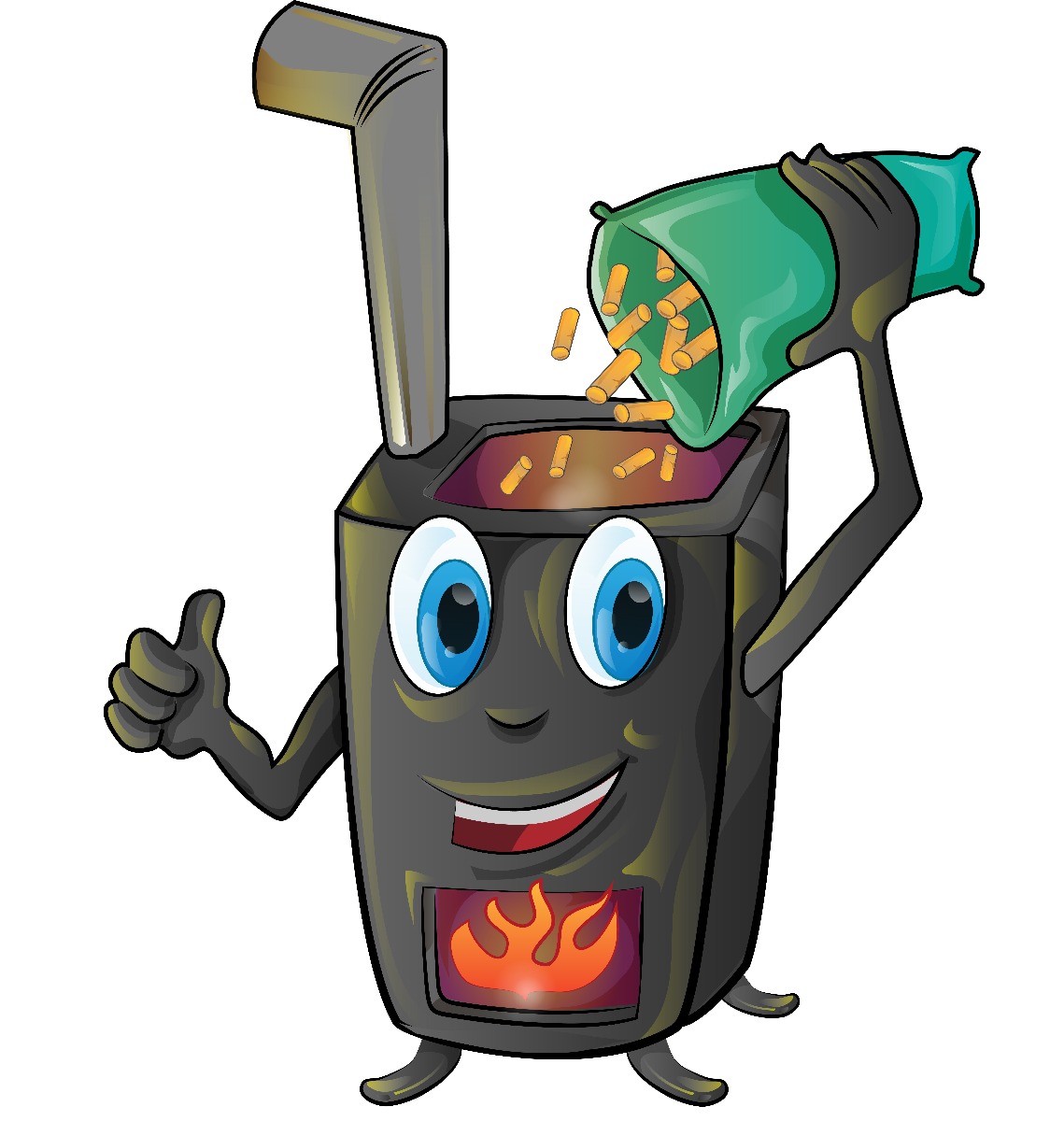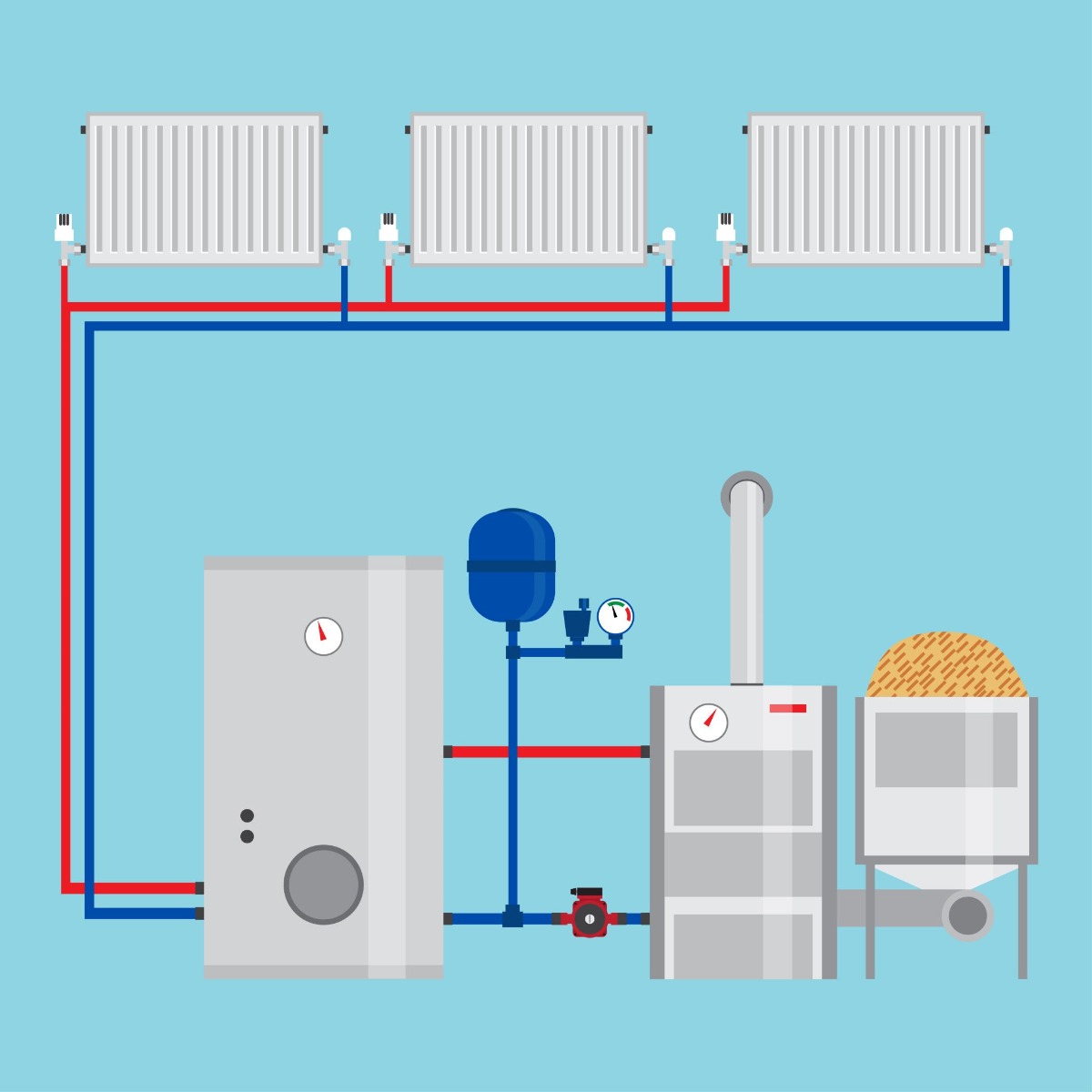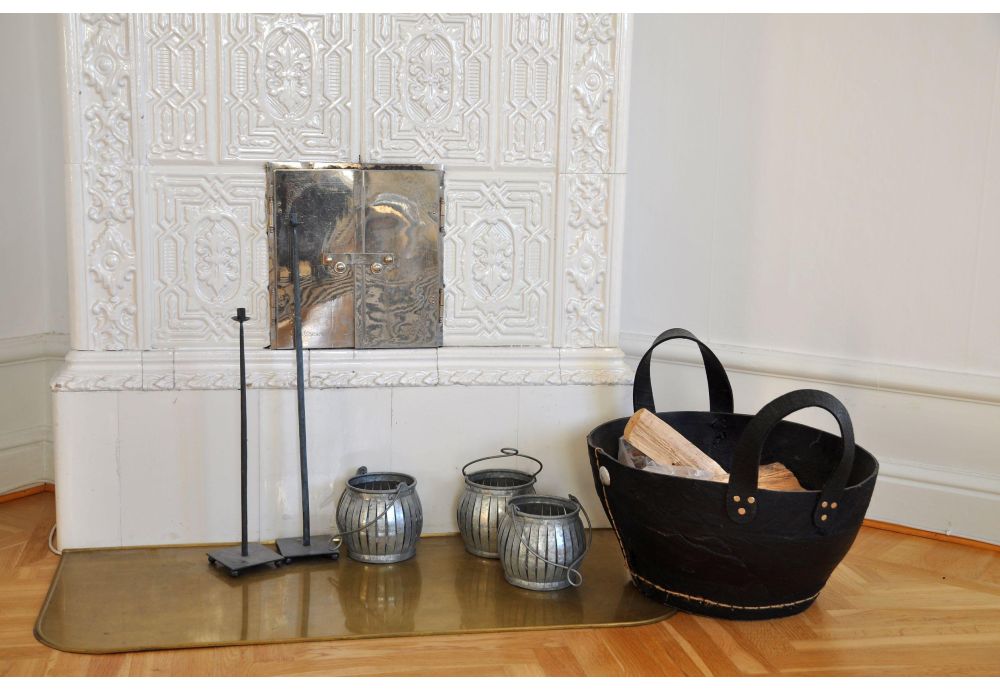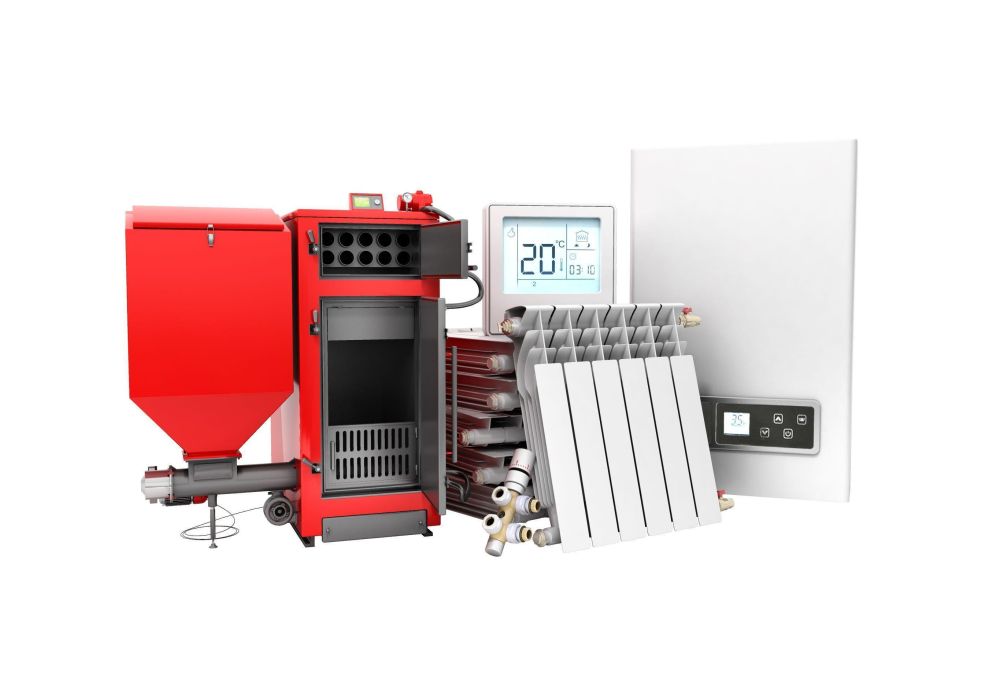Pellet stoves are a modern take on the more traditional wood burners or wood stoves, using biomass in the form of wood pellets instead of logs. Pellet stoves are clean burning which is more efficient than other types of solid fuel appliances, including wood burners. Smaller stoves work as heaters or offer an attractive way to top up central heating, while large models can also provide hot water. There is a wide range of stoves approved for use in smoke control areas.
How are pellets made?
The pellets are made from sawdust, wood chippings and other wood waste which is compressed at high temperatures causing the lignin in the wood to melt and bind the pieces together. Forcing the compressed mass though a grille somewhat akin to a mincing machine creates the cylindrical shape. Pellets are more dense than logs and so take up less storage space for equivalent heat production; wood generally produces 2 -4 kw per kg, while pellets deliver about 5 kw per kg.
Pellets are available in 10kg or 15kg bags for easy handling. Bulk buying a tonne is a cost effective option but does require access to a dry indoor storage space of at least 2 cubic metres. It is important to keep the pellets dry as they will absorb moisture from the air which can affect the burning of the pellets.
Are pellet stoves more eco-friendly?
A pellet stove is sometimes claimed to be carbon neutral, because the carbon released when the wood pellets burn is the same carbon that was absorbed by the trees during their growing phase, but this ignores the amount of carbon released as a result of harvesting, processing and transport. Pellets are a fully renewable fuel source and these stoves do have a much lower carbon footprint than those which run on fossil fuels.

How do pellet stoves work?
Pellet stoves burn the fuel completely and by controlling the air intake, the ash is reduced to almost zero. The consistency of size, shape, moisture levels and calorific value of pellets makes them suitable for use with automatic ignition systems. This means that a pellet stove connected to the electricity supply, and fitted with a thermostat and a timer can be run much the same way as a conventional gas central heating system. Fuel is poured manually into the hopper, which holds sufficient for several days use, and then a microprocessor controls the feed rate of pellets into the burn chamber, giving a control over the heat level which is not available with a wood burner. A convector fan located above the burn chamber helps to distribute heat throughout the room.
The performance and controllability of this system is far superior to that of a standard wood fire. In addition, the normal process of lighting the fire, waiting for kindling to burn through and refuelling after an hour is eliminated.
A pellet stove also does not create as much air pollution as another burner design would.

How to maintain a pellet stove
This stove unit requires little maintenance. You can use a chimney flue cleaning product on a regular basis. The glass window needs occasional cleaning and the residual ash, less than 2% of volume, must be removed every few months. The ash is rich in minerals and can be used as a fertiliser or added to a compost heap.
Pellet stoves, like all solid fuel appliances, need to have adequate ventilation: an air vent to draw the air in to feed the fire and a chimney flue. Either an existing chimney or a prefabricated twin walled flue can be used. It is important to seek professional advice on the appropriate size of the stove, the location within the building and stove installation as the work must comply with building regulations to ensure a safe operation.

DIY pellet stoves
If you have decided to build your own pellet stove, think again. There are a wide array of stove models on the market which only require you to have the ability to install a stove in your home. However, the principle of a pellet stove is similar to that of a rocket stove and you can more easily make a rocket stove yourself in your garden.
Pellet boilers
Pellet stoves and pellet boilers are both the same kind of heat source and come into their own in cold weather. However, where they differ is that the pellet stove is a supplement to your central heating, whereas the pellet boiler supplies the hot water to your main heating system.















